I’m sure there must be a lab around somewhere I can send a soil sample to for analysis, but I don’t know one off hand. For the time being, I decided to try buying a soil testing kit and testing my garden soil myself.
I finally got around to trying out my soil testing kit today:
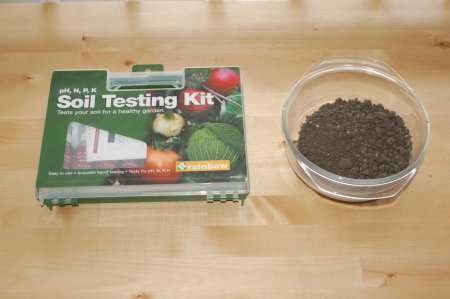
Just by looking at my soil sample I can see it is very sandy. It also contains a lot of silt because when wet it is very sloppy. The canals surrounding my garden also have a lot of silt in them. The sample appears very low in organic material. The instructions say the soil must be completely dry before testing it, and the sample above has been sitting around for a few days now.
The instructions advise doing several tests from different locations and averaging the results. For now I am just testing the one sample, but I will take more samples over time especially as I suspect problems in different parts of the garden and want to investigate further.
I suspect the previous gardener was not very sophisticated, and probably added different fertilizers and other amendments to different parts of the garden. I also saw he was growing beans in a few places, perhaps making parts of the garden higher in nitrogen than others. Unless I think there is a very obvious or urgent problem, I’m going to wait before adding anything until I have had a chance to think about it and see how things grow.
While this soil sample was taken from a part of the garden I hadn’t added anything to yet, I’ve added compost to most parts of the garden now, so if there are any nutrient problems, I have probably reduced them.
The contents of the kit looks like this:
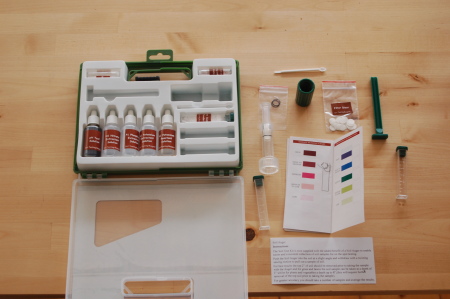
There are several bottles of liquids and vials of powders, together with some empty vials, a plunger assembly, filters and o-rings for the plunger, a few scoops and some instructions with color charts to look up results.
The kit does four soil related tests: Acidity (Ph), nitrogen (N), phosphorus (P) and potassium (K).
Except for the Ph test, where the soil is mixed directly together with the color changing chemical, all of the test have two parts. The first part involves mixing the soil together with an extractant solution, then passing it through a filter in the plunger assembly to remove the soil. The color changing chemical is then mixed separately with the extractant solution and compared to the provided charts.
Sorry this picture didn’t come out well, but this is the Ph test:
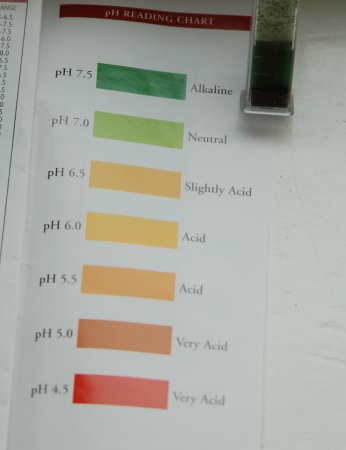
From this test I can see the soil Ph is 7.5, all the way at the far end of the test. Since the test only goes up to 7.5, and this is also my reading, it’s possible my soil is even more alkaline than that. This result conflicts with another Ph test I did a few months ago, which gave a result of 6.5.
This tells me I need to investigate this further. Perhaps there is a problem with one or both of the tests I used, or perhaps the Ph is very different in different parts in my garden.
It’s possible I have a bit of a Ph problem to deal with in the garden.
The N test:
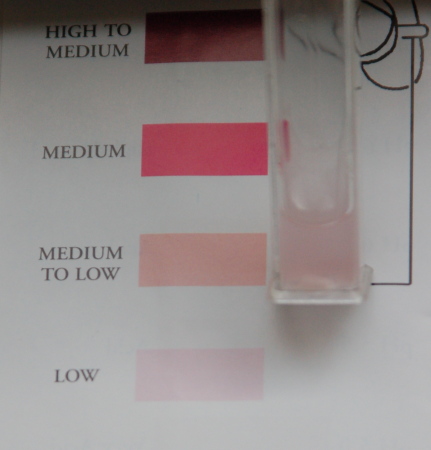
In my opinion, the results of this test lie somewhere between ‘Medium to Low’ and ‘Low’.
At least in this part of the garden, I need more N.
The P test:
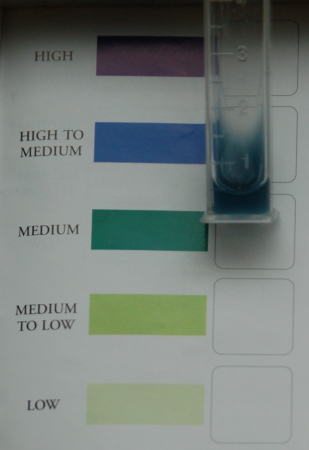
I think the results of this test are somewhere between ‘High to Medium’ and ‘Medium’, closer to the former.
At least in this part of the garden, I don’t need any more P.
K test:
For this test, I don’t have a clear picture of the results. In fact the results were very hard to read, and I don’t have much confidence in them. Perhaps after I do the test a few more times I will learn better how to read the results.
The scale looks like this:
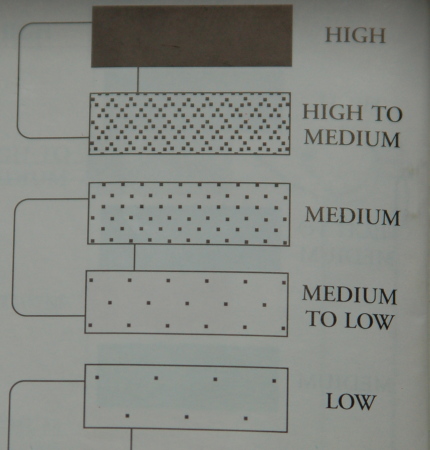
The test is supposed to result in cloudiness that you can compare to these pictures, but the result I got was almost totally clear. I repeated the test, and the second time I got a little cloudiness for a brief moment, perhaps close to the ‘Medium’ indication here, but it was really hard to know if this was right.

